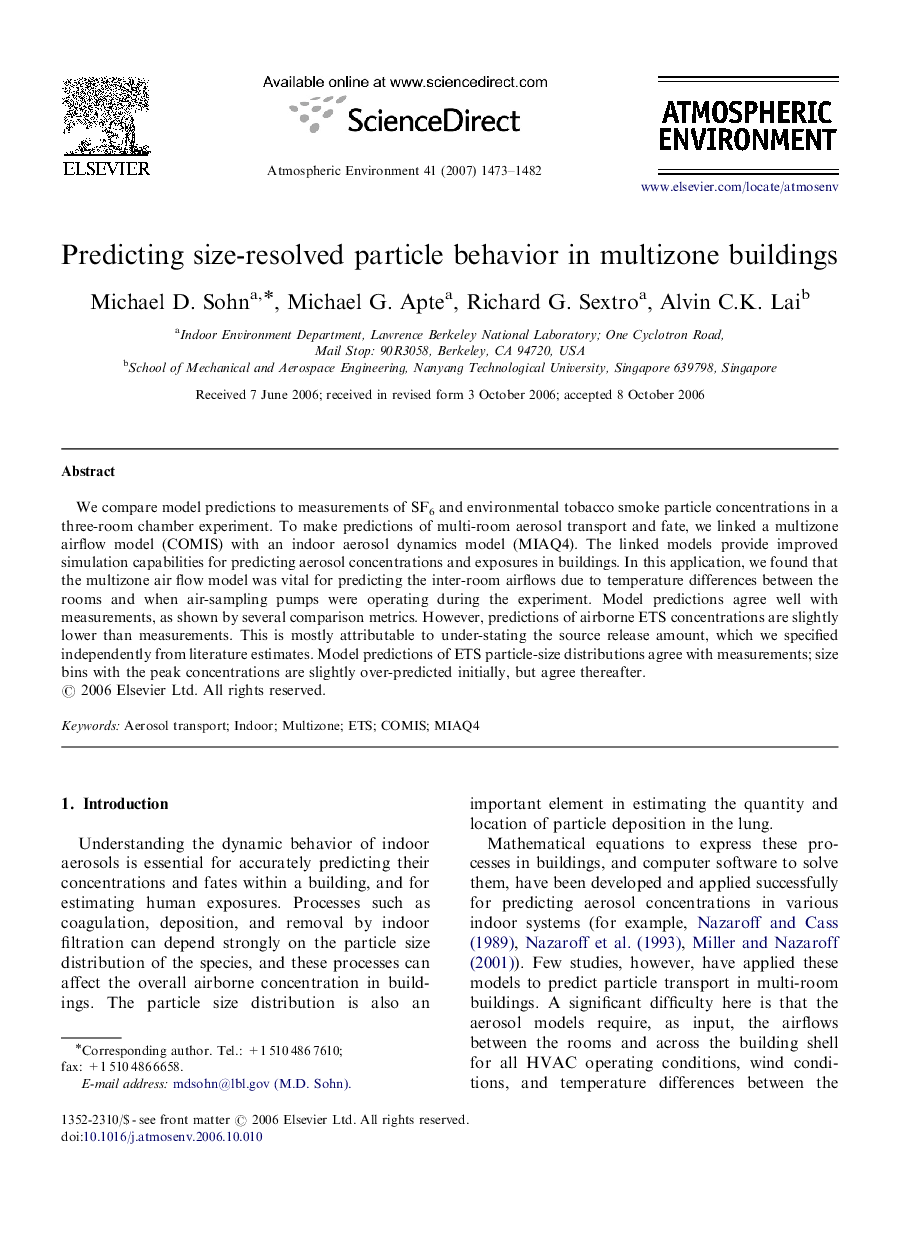| Article ID | Journal | Published Year | Pages | File Type |
|---|---|---|---|---|
| 4444135 | Atmospheric Environment | 2007 | 10 Pages |
Abstract
We compare model predictions to measurements of SF6 and environmental tobacco smoke particle concentrations in a three-room chamber experiment. To make predictions of multi-room aerosol transport and fate, we linked a multizone airflow model (COMIS) with an indoor aerosol dynamics model (MIAQ4). The linked models provide improved simulation capabilities for predicting aerosol concentrations and exposures in buildings. In this application, we found that the multizone air flow model was vital for predicting the inter-room airflows due to temperature differences between the rooms and when air-sampling pumps were operating during the experiment. Model predictions agree well with measurements, as shown by several comparison metrics. However, predictions of airborne ETS concentrations are slightly lower than measurements. This is mostly attributable to under-stating the source release amount, which we specified independently from literature estimates. Model predictions of ETS particle-size distributions agree with measurements; size bins with the peak concentrations are slightly over-predicted initially, but agree thereafter.
Related Topics
Physical Sciences and Engineering
Earth and Planetary Sciences
Atmospheric Science
Authors
Michael D. Sohn, Michael G. Apte, Richard G. Sextro, Alvin C.K. Lai,
